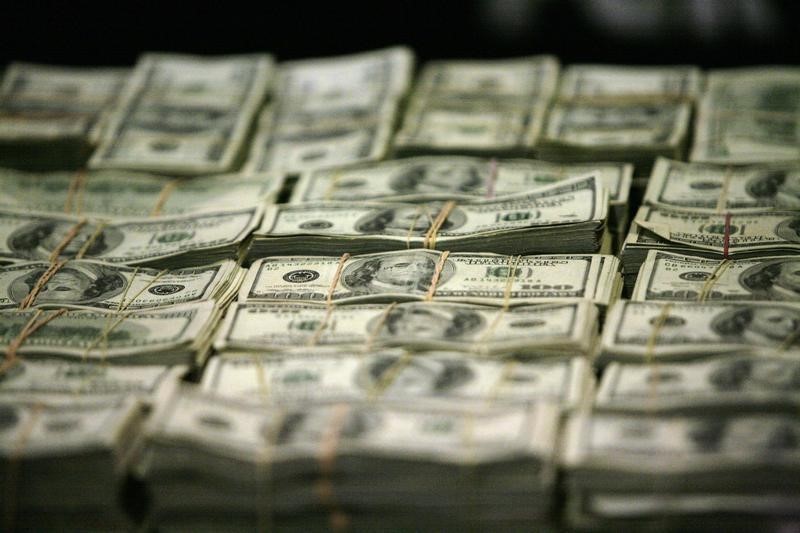Investing.com - The dollar pulled back from session highs against the other majors currencies on Friday, as investors remained very cautious ahead of Donald Trump’s inauguration ceremony, scheduled later in the day.
EUR/USD was little changed at 1.06è1, off session highs of 1.0694.
The greenback found support late Thursday when Federal Reserve Chair Janet Yellen said the central bank should continue to raise interest rates, but slowly.
Speaking at a conference in San Francisco, Yellen said that "allowing the economy to run markedly and persistently ‘hot’ would be risky and unwise," before adding: "I consider it prudent to adjust the stance of monetary policy gradually over time."
But sentiment on the U.S. dollar remained vulnerable ahead of Donald Trump’s inauguration speech amid sustained uncertainty over the new U.S. administration’s fiscal and economic policies.
Elsewhere, GBP/USD slipped 0.16% to 1.2324.
The pound weakened broadly after the U.K. Office for National Statistics said on Friday that retail sales declined 1.9% in December, confounding expectations for a 0.1% slip. Retail sales fell 0.1% in November, whose figure was revised from a previously estimated 0.2% rise.
Year-on-year, retail sales increased by 4.3% last month, compared to expectations for a 7.2% climb.
Core retail sales, which exclude automobiles, dropped 2.0% in December, disappointing expectations for a 0.3% fall.
USD/JPY was little changed at 114.95, while USD/CHF held steady at 1.0059.
The Australian and New Zealand dollars remained weaker, with AUD/USD down 0.16% at 0.7549 and with NZD/USD retreating 0.51% to 0.7155.
The two currencies had strengthened earlier, after data showed that China’s gross domestic product rose 6.8% in the fourth quarter of 2016, in line with expectations. Year-on-year, China’s economy grew at a rate of 6.8%, slightly above expectations for a growth rate of 6.7%.
The data eased concerns over a slowdown in the world’s second biggest economy, although worries surrounding the country’s growing debt persisted.
China is Australia’s biggest export partner and New Zealand’s second biggest export partner.
Meanwhile, USD/CAD was up 0.17% at 1.3341, off a fresh two-week high of 1.3388 hit earlier in the session.
The Canadian dollar found some support as oil prices continued to climb on Friday, a day after the International Energy Agency said that world oil markets are slowly tightening as demand rises.
But gains were capped as Statistics Canada reported on Friday that retail sales rose 0.2% in November, disappointing expectations for a 0.5% advance.
A separate report showed that Canada’s consumer price index dropped 0.2% in December, compared to forecasts for a 0.1% decline.
Year-on-year, consumer prices gained 1.5% last month, confounding expectations for a 1.7% rise.
The U.S. dollar index, which measures the greenback’s strength against a trade-weighted basket of six major currencies, was steady at 101.07,off session highs of 101.48.
